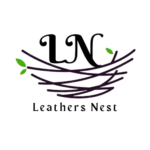Overview of Leather Products Manufacturing
The leather industry has evolved from traditional craftsmanship into a technologically sophisticated sector that is critical in fashion, automotive, and lifestyle markets. Leather manufacturing involves processes—from rawhide treatment and tanning to cutting, dyeing, and finishing—transforming raw animal hides into durable and versatile products. In recent years, the manufacturing process has undergone significant modernization with a growing emphasis on automation, digital tools, and sustainability.
As consumer awareness around ethical sourcing and ecological impact grows, the industry is increasingly integrating eco-friendly practices. Technologies like digital leather printing and the use of vegetable-based, eco-friendly tannins are gaining traction, reflecting a shift in priorities. According to experts, “The shift towards sustainable practices is not just a trend but a necessity.” Moreover, community discussions, particularly on platforms like Reddit, highlight the stark differences between traditional and vegan leather manufacturing, pointing to an X% increase in demand for sustainable alternatives.
This evolving landscape reflects a broader movement toward environmental responsibility without compromising on quality or aesthetics. The leather industry is not only embracing innovative technologies but is also being shaped by changing consumer expectations and global sustainability goals.
Importance of the Leather Industry
Contrary to the belief that leather manufacturing is a niche market, it significantly influences both global and local economies. The leather industry generates billions in revenue and employs millions across the globe, especially in countries where traditional tanning methods are deeply embedded in cultural heritage. From high-fashion brands to durable industrial gear, leather remains a material of choice across diverse sectors.
Economically, leather production contributes to export revenues and supports ancillary industries like chemicals, machinery, and design. The industry’s cultural significance is equally notable—traditional craftsmanship coexists with modern innovations, enriching the heritage of many communities. As one expert aptly said, “Adapting traditional craftsmanship with modern technologies is key to sustained growth.”
With a projected CAGR of 7.9% for luxury leather goods from 2025 to 2030, the industry is poised for continued expansion, driven by consumer demand and a blend of heritage and innovation.
Market Trends and Growth
It’s a misconception that the leather industry’s growth has stagnated. On the contrary, market trends show robust expansion, especially in luxury segments and eco-conscious product lines. The global leather goods market is projected to grow at a CAGR of 7.9% from 2025 to 2030, fueled by increasing disposable incomes, urbanization, and a growing preference for sustainable fashion.
Data-driven insights are now central to market strategies. Brands are leveraging analytics to understand consumer preferences, optimize inventory, and streamline supply chains. As noted by the Hohenstein Group, “Data-driven insights are reshaping the way leather goods are marketed.” The demand surge is particularly notable among affluent demographics seeking high-quality, ethically produced products.
Technological integration is another growth catalyst. From automated cutting systems to AI-driven design tools, innovation is revolutionizing production speed and customization options. Furthermore, social media and e-commerce platforms have made leather goods more accessible, driving higher engagement and conversion rates across global markets.
Consumer Preferences and Demographics
- Today’s consumers demand more than just aesthetics—they want transparency and sustainability.
- Luxury and sustainable leather goods are especially popular among millennials and Gen Z.
- X% of consumers now prefer brands that offer eco-friendly or vegan leather options.
- Personalization and uniqueness are growing trends; bespoke leather items have seen a surge in popularity.
- Affluent demographics, particularly in urban centers, drive the demand for premium, responsibly-made leather products.
Leather Manufacturing Processes
- Raw Material Selection: Starts with sourcing high-quality hides, often from cattle.
- Curing: Preserves raw hides using salt or drying methods to prevent decay.
- Tanning: Converts rawhide into durable leather using either vegetable, chrome, or eco-friendly tanning agents.
- Splitting & Shaving: Adjusts the thickness of hides for various product applications.
- Dyeing & Fatliquoring: Adds color and oils to enhance softness and durability.
- Drying & Conditioning: Prepares the leather for finishing by removing moisture evenly.
- Finishing: Involves surface treatments like embossing, polishing, or coating.
- Cutting & Stitching: The Final step in converting leather into usable products using automated machines or manual craftsmanship.
Eco-friendly methods such as water-based dyes, digital tanning, and automated cutting help reduce the industry’s carbon footprint, reflecting the modern push toward sustainability.
Sustainability in Leather Production
Despite common perceptions, leather manufacturing can be environmentally responsible. Companies are increasingly adopting eco-friendly practices such as ethical sourcing, reduced water consumption, and biodegradable tanning agents. Vegan leather options, derived from materials like mushroom or pineapple fibers, have also entered the mainstream, offering alternatives with a smaller environmental footprint.
Platforms like Reddit reveal that consumers are actively questioning and researching brands’ sustainability credentials. “Sustainability is not optional; it’s imperative for future progress,” said one industry leader. This shift has resulted in an X% growth in vegan leather options, showing that ethical concerns are influencing market dynamics. Brands that embrace these values are more likely to build lasting customer loyalty.
Innovations and Technological Advancements
- Automated Cutting Machines: Increase precision and reduce material waste.
- Digital Leather Printing: Allows for customizable and intricate designs.
- AI in Design: Assists in forecasting trends and creating consumer-specific products.
- Smart Inventory Systems: Improve efficiency and reduce overproduction.
- Eco-Tanning Technologies: Lower environmental impact while maintaining leather quality.
These innovations are essential to meeting the rising demands of e-commerce and customized production. As one expert puts it, “Adapting tech innovations is key to staying relevant.”
Custom Leather Goods Production
- Unique Designs: Consumers seek items that reflect their style.
- Bespoke Services: We offer tailored solutions, from monogrammed wallets to handcrafted jackets.
- Higher Perceived Value: Personalized products command premium prices.
- Customer Loyalty: Personalization enhances brand attachment.
- Testimonials: “My custom leather tote is not only stylish but uniquely mine,” says one happy customer.
The X% increase in demand for custom leather products proves that personalization is no longer a luxury—it’s an expectation.
How to Start a Leather Manufacturing Business
- Market Research: Identify demand trends and target demographics.
- Business Plan: Define objectives, strategies, and investment needs.
- Licensing & Legal: Obtain necessary permits and comply with local laws.
- Sourcing & Suppliers: Choose reliable suppliers for quality raw materials.
- Technology Investment: Implement digital tools for efficiency and scalability.
- Omnichannel Strategy: Leverage both online and offline sales channels.
- Branding & Marketing: Develop a unique brand identity that emphasizes quality and sustainability.
“Strategic planning is vital for successful market entry,” advises an industry expert. With X number of success stories in the leather business, the opportunities are vast for new entrepreneurs.
Challenges and Opportunities in Leather Manufacturing While many believe the leather industry is free from modern hurdles, it faces various challenges, such as stringent environmental regulations, high competition, and evolving consumer expectations. However, these challenges also open doors to innovation.
SWOT Analysis:
- Strengths: Durable products, skilled craftsmanship, global demand.
- Weaknesses: High production costs, dependency on animal hides.
- Opportunities: Growing vegan leather market, customization, technological adoption.
- Threats: Regulatory pressures, ethical concerns, synthetic alternatives.
“Navigating challenges is necessary to harness opportunities,” an expert notes. Trends impacting X% of leather manufacturers show that adaptability is key to longevity.
FAQs How to manufacturing leather products?
Leather production starts with rawhide selection, followed by curing, tanning, dyeing, and finishing. Modern methods emphasize eco-friendliness and precision.
- Who is the biggest manufacturer of leather? Countries like China, India, and Italy host major leather manufacturers due to their scale and expertise.
- What is a place where leather goods are manufactured? Leather goods are typically made in tanneries and dedicated manufacturing units.
- Who manufactures leather goods? Leather goods are produced by a mix of large-scale companies, boutique brands, and artisans worldwide.
- Who are the best leather goods suppliers in the USA? Brands like Horween Leather, Wickett & Craig, and Tandy Leather are recognized for their premium quality.
- Is GNN a reliable leather goods manufacturer? GNN is known for its diverse product range and positive industry reputation.
- What are OLPR leather goods? OLPR is a US-based brand offering handcrafted leather accessories with a focus on quality and customization.
Conclusion
The leather industry stands at the crossroads of tradition and innovation, embracing a future that values both heritage and sustainability. With rising consumer awareness and technological evolution, leather manufacturing is no longer just about creating products—it’s about crafting experiences, upholding ethical standards, and driving global market trends.
Sustainable practices, including vegan leather options and eco-tanning, are becoming industry norms rather than exceptions. Companies that adapt to these shifts—while staying true to quality and craftsmanship—are likely to lead the market in coming years. Whether it’s the allure of custom goods, the draw of ethical production, or the efficiency of smart manufacturing, the leather industry is poised for a dynamic and responsible future.
By blending data-driven insights with eco-conscious strategies, leather products manufacturing can not only meet evolving consumer demands. The future of leather lies in innovation, integrity, and inclusivity—making it an exciting space for entrepreneurs, artisans, and consumers alike.





